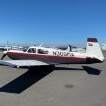Wet Wing Longevity
How many years on your tank sealant before it started to leak/seep?
36 members have voted
-
1. How many years on your tank sealant before it started to leak/seep?
-
less than 5 years0
-
5-10 years
-
10-15 years
-
15-20 years
-
20-25 years
-
25-30 years
-
30 or more years
-
My original sealant is <10 years and never leaked0
-
My original sealant is 10-20 years and never leaked
-
My original sealant is 20-30 years and never leaked0
-
My original sealant is 30 or more years old and never leaked
-
Unknown
-
-
2. If you have patched your tanks, how many years before you saw more seeps/leaks?
-
less than 1 year0
-
1-2 years
-
2-5 years
-
5-10 years
-
more than 10 years
-
I've not had my tanks patched
-
I've patched tanks and still haven't had another leak/seep (comment below regarding how long patch has been good for so far)
-
-
3. If you have resealed your tanks (with a complete strip and reseal i.e. WeepNoMore or WetWingologists, etc.); how many years did your sealant have at the time of reseal?
-
<5 years0
-
5-10 years
-
10-15 years0
-
15-20 years
-
20-25 years
-
25-30 years
-
30 years or more
-
I've not resealed my tanks
-
-
Members Online


Recommended Posts
Join the conversation
You can post now and register later. If you have an account, sign in now to post with your account.